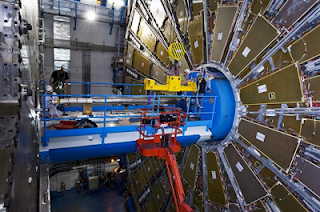ATOMS and MOLECULES
ATOMS and MOLECULES
Any material is composed of very small particles (invisible) called atoms.They are so small they fit in the millions on top of a needle. Grouping of atoms forming molecules, the largest of its kind containing several thousand atoms.
The idea that any material is composed of small particles appeared since the time of Ancient Greece. Around the year 420 BCE philosopher Democritus concluded that matter is composed of smaller particles which in turn divide.
These particles are called nowadays atoms athome Greek word meaning indivisible.
But other philosophers had different theories. In the fourth century BCE Aristotle believed that every material is composed of four basic elements: - earth, air, fire, water, only diferite.Aceasta quantity theory has been widely accepted in the early seventeenth century. The objective was to create alchimieia, elixir, a drink that give eternal life of man.
Another objective was enriching by turning ordinary metals into gold. Many alchemists boasted that they had solved these problems, but in reality none was successful.
DALTON'S REVOLUTIONARY THEORY
Some scientists still remained of the opinion that matter is composed of atoms, but by the early 1800s there was no clear evidence to support these allegations scientifically.
An English chemist and writer named John Dalton performed experiments with gases, specifically investigated the combination of these. A determined such that hydrogen and oxygen combine in the same weight ratio to form apa.La reached similar results and other researchers, but Dalton was the first to understand their implications.
He concluded that materials are composed of atoms and the atoms of a substance are all the same weight division.If two primary substances combine atoms join together then always the same quantitative ratio (on weight).Dalton's theory explained the cause of the atoms in the same report combines quantitative and created a starting point for other researchers to examine the matter.
In conclusion matter is composed of atoms, ... right, but the atoms that compose?
The first indications of this appeared in the late 1800s, when researchers examined the passage of electricity through thin air through a glass tube. Tube issued from time to time in the light of the times when a high voltage was applied to two metal plates placed in gas, or otherwise electrodes. The light was produced by invisible radiation that start and stop the negative electron in the wall of the glass tube.
In 1890 British physicist JJ Thompson showed that these cathode rays, as it is called in that time, are actually particles of negative charge currents.
At that time it was assumed that electrons are ripped in some way the atoms, but it was not clear their organization within an atom.
Thompson's hypothesis was that atoms somehow resembles a pudding with raisins, more particles negatively charged electrons are embedded in a voluminous but lightweight material, spherical,.
Experiences developed and subsequently made to clarify the internal structure of the atom denied Thompson's theory.
RUTHERFORD
MODEL
In 1911, a colleague of Thompson, Ernest Rutherford, born in New Zeeland, but has worked in the UK, outlined a new atomic structure, which gave the answer to the phenomena observed in experiments. According to them, the middle atom nucleus or otherwise, is positive charge and is relatively hard. Electrons revolve around it: particles very small and light, carrying a negative charge.
Rutherford did not realize though that the atomic nucleus is composed of many particles:- Some positively charged- Other no load
The existence of positively charged particles (protons) was found around 1920.
Particles without electrical charge mentioned above were discovered around 1932 by Sir James Chadwick, which he called electrons.
This was completed model atom we can understand the behavior of matter.
Elements
Elements are the substances submitted in each atom has the same number of protons. This indicates the number of protons atomic number of the element. There are a total number of 92 elements in nature.
Using special equipment, called particle accelerators can produce several other items that contain more protons.
Among the natural elements remind iron, mercury hydrogen.
In many substances, the atoms form groups called molecules.
Hydrogen gas is formed from molecules, each molecule is composed of two atoms of hydrogen.
And water is a composition, each water molecule contains two hydrogen atoms and an oxygen atom.
There are many molecules that contain a larger number of atoms: protein in living organisms are composed of molecules of sophisticated molecules and the number reaching thousands.
APPENDIX
nuclear accelerator -1
nuclear accelerator - 2
nuclear accelerator - 3
model - 1
model - 2





Comentarii
Trimiteți un comentariu